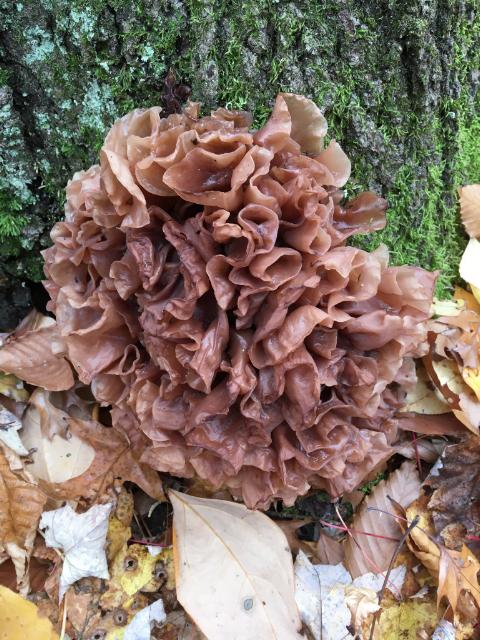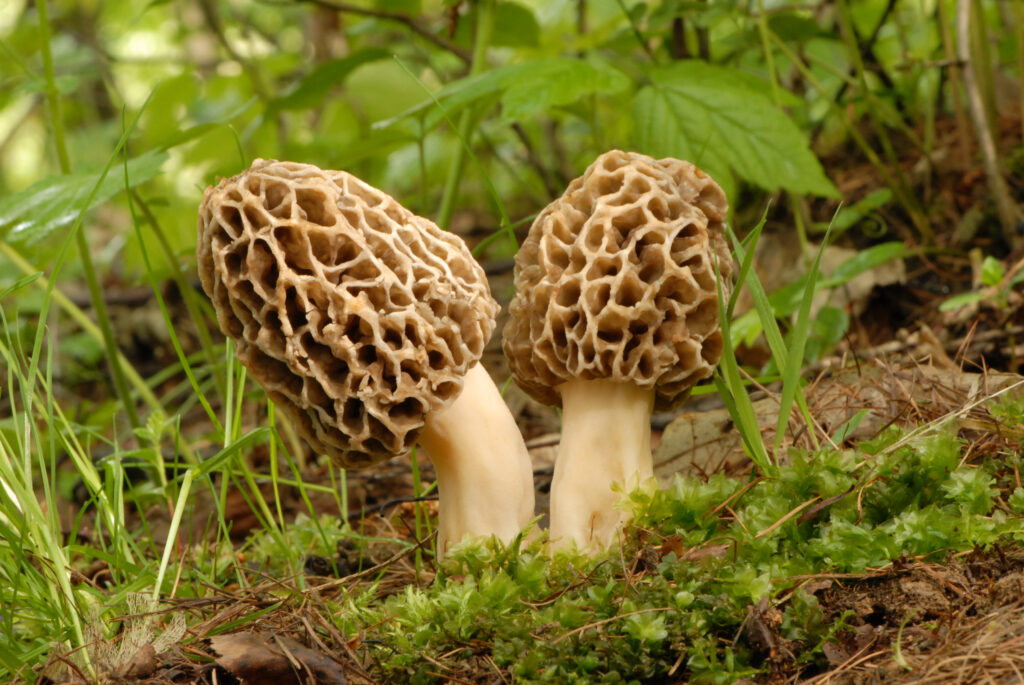We weren’t looking for morels – just mowing the lawn – when we saw a couple of honeycombed domes poking up where the grass meets the woods. The signs were promising: a hollow stem and a cap that seamlessly attaches to the stalk. To be safe, I showed the mushrooms to a friend with many years of morel-hunting experience, who confirmed the delicious find. Hunting them became a favorite spring ritual.
But mushrooming beyond morels always seemed too risky. Of the 10,000 known species in North America, only about 300 are edible and some can be downright deadly.
Thank goodness for groups like Michigan Mushroom Hunters Club. They take some of the mystery out of mycology so amateurs can forage fearlessly. While MMHC offers public hunts across the state, they were able to connect us with a private guide for a late fall hunt. Many states have their own clubs and the North American Mycological Association also offers good resources.
We met Dr. Phil Tedeschi at one of the state recreation areas in Southeast Michigan. A forager for nearly 50 years, he also educates others on proper mushroom identification. We were only a few minutes into the hunt when I saw the first mushroom in some dead leaves next to the trail, one side clipped by a hiker’s boot. Phil turned it over in his hand, examining the bluish cap, accordion-like gills underneath, and sturdy, solid stem. Good news: It was Lepista nuda, also known as a blewit, and it was edible.
Once you find the first mushroom, it’s somehow easier to see others. We found some clinging to dead logs like shelves and others hugging the base of a tree. In a pine forest, we found a motherlode of Tricholoma myomyces (“mouse ears”) hidden under the fallen needles. We foraged for a couple of hours, discovering flat mushrooms, domed mushrooms, mushrooms with gills, others with pores.

We found Tricholoma myomyces (“mouse ears”) hidden under the fallen needles 
Tremella foliacea has the unappealing nickname “leafy brain fungus.”
The most unusual was Tremella foliacea, a wobbly, jelly-like mushroom the size of a cantaloupe. Its unappealing nickname is “leafy brain fungus” and it felt like a mass of cooked egg noodles as I cut it from the side of a dead tree. (Try them with other mushrooms in a Hot and Sour Soup.)
All went into our basket, awaiting the final verdict from Phil.
Many species look alike and unfortunately, some edible mushrooms can easily be confused with those that aren’t. A certified expert can keep you from making a potentially fatal mistake. About a third of our haul was either not edible or questionable.
When hunting for wild mushrooms, it’s important to follow the Ten Commandments of Eating Wild Mushrooms. The most important?
When in doubt, throw it out.

